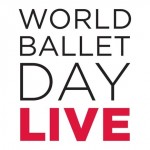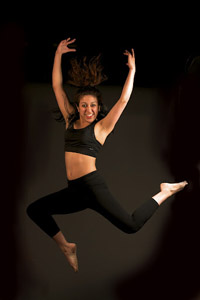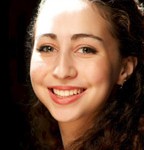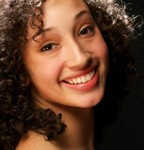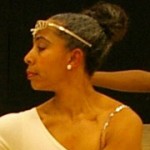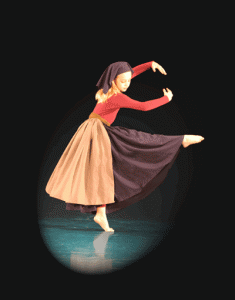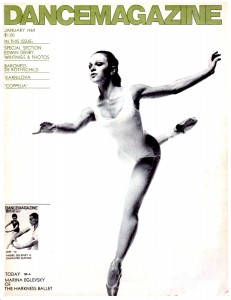
Marina Eglevsky on the cover of Dance Magazine, January 1969.
Marina Eglevsky, born into ballet royalty, started dancing very early – almost as soon as she could walk. Her parents, Andre Eglevsky, premier danseur with George Balanchine’s American Ballet (which later became the New York City Ballet) and her mother, Leda Anchutina, also a soloist with NYCB, brought to her a legacy of dance that is a fascinating account. I had the great pleasure of interviewing her about her life – from her growing up years, being taught by George Balanchine, and on to when she took the spotlight in her own right as a dancer, first with the New York City Ballet, then onto Harkness Ballet and the Hamburg Ballet with John Neumeier, among others. Her father Andre is also credited with – if not the first – then surely the first in this country, of inviting amateur adults into his ballet classes at The Eglevsky Ballet school. What follows is Part 1 of my interview with Marina.
Q: Marina, you are the daughter of Andre Eglevsky, widely regarded as the greatest male classical dancer of his generation, and you began studying ballet with George Balanchine and now stage his ballets for other companies. When did you start dancing? Where did your passion for dance come from?:
A: I just started dancing, my parents were not really involved in whether I did or didn’t – but, once I was in it, then they became involved in how I was working in ballet.
By the age of 2 or 3 I was sitting around in rehearsals backstage. At that point, my father went on a major tour in Europe, and when he was rehearsing or busy – I would disappear and start just dancing somewhere – my mother said she would lose me all the time and to find me, would look for the crowd of people because I would be in the middle of the crowd dancing – I drew the crowd with my dancing.
My father had a performance to do on major network and was running around the studio and somehow I got into a Howdy Doody set and they whisked me away and put me in someone’s office. I remember sitting in this office and there was a pair of pointe shoes, they were really little – I just kept looking at them, and then the lady in the office gave them to me and I put those on and took Balanchine’s class in those shoes until they disintegrated and shredded.
I was allowed to take Balanchine’s class at a really young age and take company class, even though I hung underneath the barre, he would correct me. I was able to reach the barre and so he would teach me turnout, etc. Everyday I came in with my father, and I would be in company class. By 5 or 6 they started to put me in Nutcracker and then I was more or less taking regular classes at the school and being involved in performing Nutcracker. After various roles, eventually I grew too big for the party scene and auditioned for Clara and really wanted it, but I was too small for the costumes. I performed in Pulcinella up until 12 or 13 and by then I was a teenager and really questioned whether I wanted to continue in dance since I’d already put in a lot of time and I wanted to get more involved with regular school.
At that time, my father started his own company and school, (while still dancing for NYCB) – The Eglevsky Ballet – and out of his school he would do his own guesting appearances. At one of those guest appearances he had two heart attacks and that was end of his career so when he recovered, he went more into his own school, and Mr. Balanchine said “Please, I will help you with your school and your company and please come and work with my school” (SAB, School of American Ballet). I was around 12 at the time – it was a big change. I thought maybe I should stay around and go to school and be a doctor. I asked my parents what they thought – they said: we don’t care. So that made me angry and I thought I’d show them – so I decided to continue dancing. I went over to American Ballet Theatre (ABT) and focused in on a teacher there.
Eventually, Mr. Balanchine did take me into NYCB at 14 – and it was like a 2ndhome there – it was just part of the course. Yet, I was afraid to be only one kind of dancer, a Balanchine dancer – and, I was also under the shadow of my father – part of me wanted to get away from that and be on my own. Rebekah Harkness of the Harkness Ballet – had the kind of choreography I felt an affinity for and it was the kind of repertory I wanted to do – so, one day I went up to the director and asked to be in Harkness – and they ended up saying yes.
Q: What was your experience like with Harkness – how long did you stay?
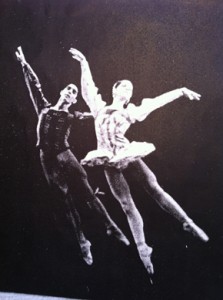
Marina with The Harkness Ballet.
Courtesy of Marina Eglevsky.
One of the 1st choreographers in Harkness was John Neumeier, and he’d expressed a great interest in me. At that time I was 15 or 16, and I didn’t understand the implications of a choreographer liking me, otherwise if I’d understood I would’ve stayed with Balanchine. While I was at Harkness, I married a dancer there which my parents were also against – after Harkness folded in the 70’s, we worked a little bit with Eglevsky Ballet and tried to heal and mend things with my parents.
After that, we were taken into Maurice Bejart’s company – we stayed with them until contracts started, and while we were waiting for them to begin, it didn’t feel right to me, but my husband was thrilled. Once I was married, my husband and I had a goal to stay together – which made it difficult to get a job. We went to Stuttgart, got a yes, but it didn’t come through, so then we went to ABT, I got a yes but not my husband, so I didn’t go. One day I was hanging around in ABT in the studios, and a man from the Royal Winnipeg Ballet was there, and asked if we wanted to be in the company, and they had this amazing repertory – like Harkness – so we said sure. So we went there – it was wonderful, one of the first choreographer’s that came to work with us was John Neumeier, and we worked with the Winnipeg company for awhile. John said he was starting a new company in Hamburg, Germany and “would you come to Hamburg?” We both said yes to joining Hamburg Ballet – John’s still there – (he was from Stuttgart, but branched off to the Hamburg Ballet.)
End of Part 1 – stay tuned for next month’s installment.
